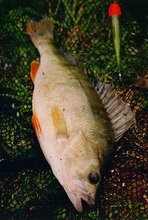 |
| Bubbling away...with the lentils cooking in the foreground |
By popular demand I am going to attempt to provide the recipe for my much desired but difficult to define Moroccan Chicken dish. It's troublesome, due to my proclivity to use whatever ingredients I have to hand and to alter the dish accordingly and so I must necessarily assume that the reader has some culinary competence and will be able to adjust the components as applicable.
As usual with this type of dish, the basic tenet is to build up the flavours by adding enhancing and harmonising constituents, elements that accommodate each other well, whilst at the same time retaining some authenticity in the dish.
So I'll start with the chicken - use what you like!
I use thighs because I think the meat is tastier, you may prefer breast but you could use the whole chicken, it's entirely up to you. This dish is cooked for a while so that the meat will pass beyond "just done" into the "falling off the bone" category, so please feel free to experiment.
Here is a list of the basic essentials, the ingredients that must end up in the dish in some measure.....
A medium onion, peeled and finely chopped or sliced
Garlic, two or three (or four) finely chopped or sliced
Fresh chili, de-seeded, and finely chopped
Dried sultanas, raisins,apricots,dates or something similar
Either fresh tomatoes finely chopped or a tin of chopped tomatoes (add a pinch of sugar with the latter)
Stock (chicken or vegetable)
A teaspoon of ground Cumin
A teaspoon of ground Cinnamon or a Cinnamon stick or two
A teaspoon of ground Ginger
A couple of fresh bay leaves (Dried if you have to)
As much chopped thyme as you wish
A little dollop of honey (not too much)
Salt
Pepper
Chopped fresh Coriander
And of course, the chicken
Ingredients you could add or substitute:
Fresh fruit (grapes, apple, lemons, orange)
fennugreek
Sesame seeds or pistachio nuts
Lentils (I almost always add some of these - pre-cooked)
Fresh green beans or peas (towards the end of cooking- I usually add some to give a colour addition)
Extra chili powder
Tomato puree
Method
Again I am assuming some knowledge here...
I use a large cast iron casserole dish.
Fry off the chicken to brown and seal - remove from the dish
Fry off the onions slowly for 5 minutes or so until translucent but not brown.
Add the garlic and chili and sweat for another three or four minutes
Pour in the tinned tomatoes or add the fresh with a little stock
now add the spices, bay leaves a little salt, pepper and the dried fruit together with the chopped thyme.
Allow to cook for 5 to 10 minutes on a low heat to reduce slightly and co-mingle. Check the seasoning...
Add the chicken, honey and enough stock to almost cover and simmer for 15 minutes or so....
Give the dish a good stir to mix up all the ingredients and place in a medium oven for an hour or so. You'll need to check it after half an hour just to check it hasn't dried out too much - especially if you have added lentils.
It's ready when the sauce is thick, unctuous and not at all runny. Serve with the chopped coriander sprinkled on top with rice, flatbreads or both and a fresh white wine of your choice....Enjoy.
























